Animation has come a long way since the early days of hand-drawn cartoons. Whether it’s a short film or a full-length feature, creating a 2D animation takes a lot of work across multiple stages, including pre-production, production, and post-production. The 2D animation pipeline refers to the typical production workflow and stages involved in creating a 2D animated film or project. The process from initial idea to final output is lengthy but rewarding. In this post, I’ll provide an overview of what goes into the 2D animation pipeline.
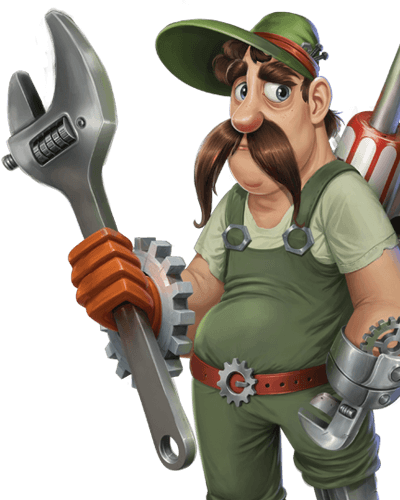
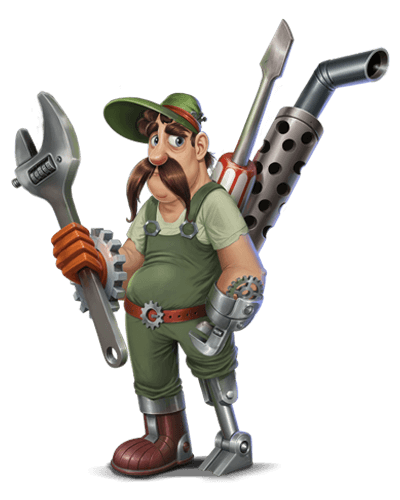
Need 2D Animation Services?
Visit our 2D Animation Service page to see how we can help bring your ideas to life!
Key Components of the 2D Animation Pipeline
The question is, how many step processes in 2D animation production are required?
Let’s take a look behind the scenes at the typical 2D animation pipeline:
- Pre-production (Idea, Script, Storyboard, Animatic, and Concept Art)
- Production (Layout, Design, Rigging, Key Animation, Inbetweening, and Compositing)
- Post-production (Editing, Visual Effects, Sound Design, and Final Output)
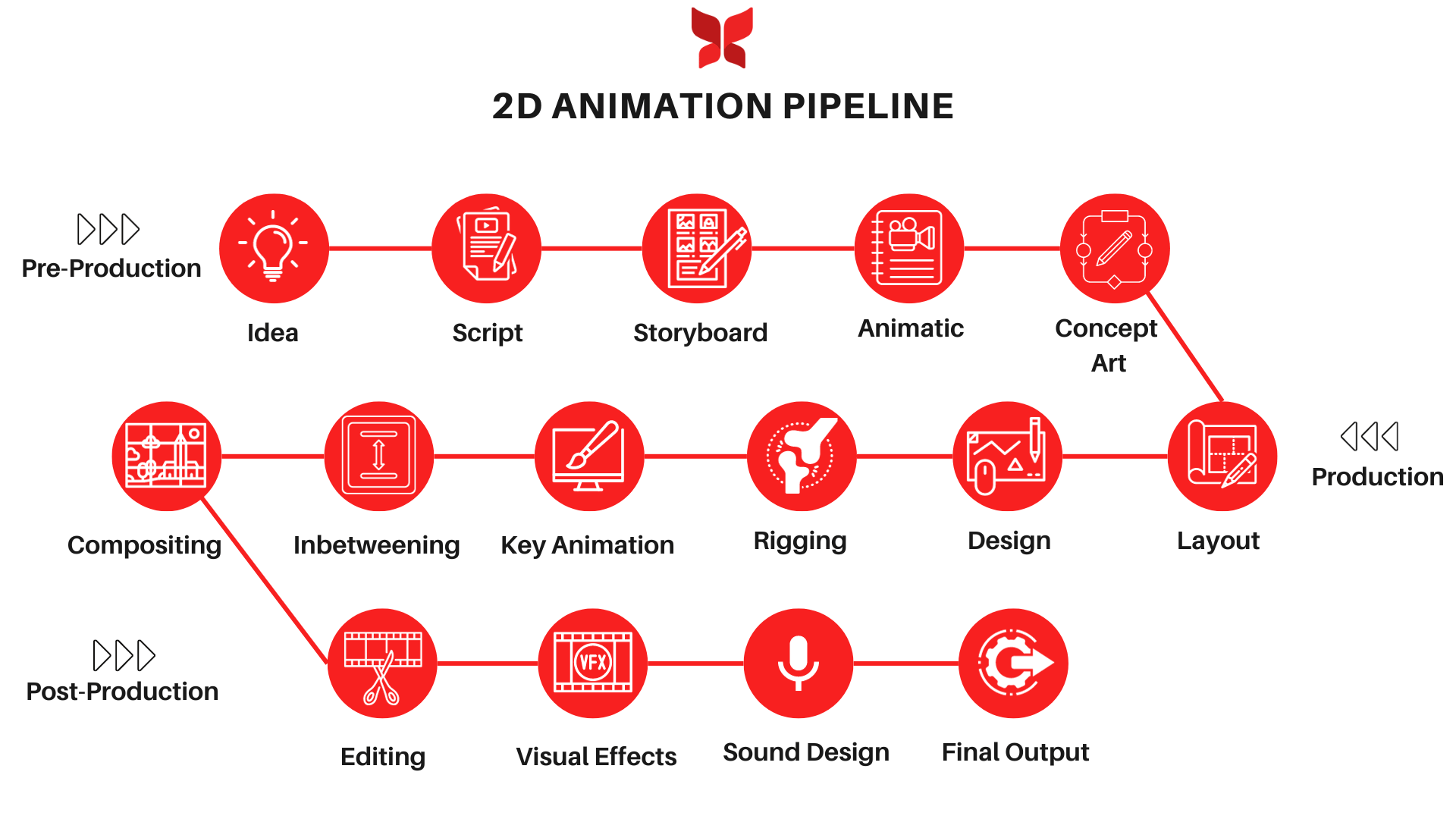
Pre-Production in 2D Animation Pipeline
The pre-production includes the following stages in the 2D animation pipeline:
Idea Generation
Everything starts from here, exactly where the idea is on the table, ready for visualization. Bringing a 2D animated film to life begins long before drawing the first frame. Like any creative endeavor, everything flows from the seed of an idea. Developing a compelling concept provides direction and purpose for production.
While a high-concept animation idea is critical, the execution matters just as much. With an idea solidified, the style and tone can be developed to best suit it. Maybe it calls for an energetic, exaggerated look or a hand-painted, lyrical style. Let the idea inform the art direction.

Script Writing
In 2D animation, the script transforms a story from abstract ideas into tangible words on a page. Animation scriptwriting is the crucial first step in defining the narrative before visualizing it through animation. A compelling script lays the groundwork for the film to blossom.
Through each draft, the world becomes increasingly tangible.
Scriptwriting transforms nebulous ideas into a defined narrative for the animation process. It’s the crucial first step in every 2D animated film’s journey from imagination to fully animated realization.
Storyboarding
Animation storyboarding brings the script to life visually before full production begins. Story artists illustrate the script scene-by-scene in a sequence of panels, like a comic book. The boards visualize the storytelling by showing the following:
- Camera angles and composition in each shot
- Character staging, poses, and facial expressions
- Scene setting and atmosphere
- Key storytelling moments
Storyboards provide an illustrated outline of the entire film. This enables the director and team to evaluate story flow, scene pacing, and continuity.
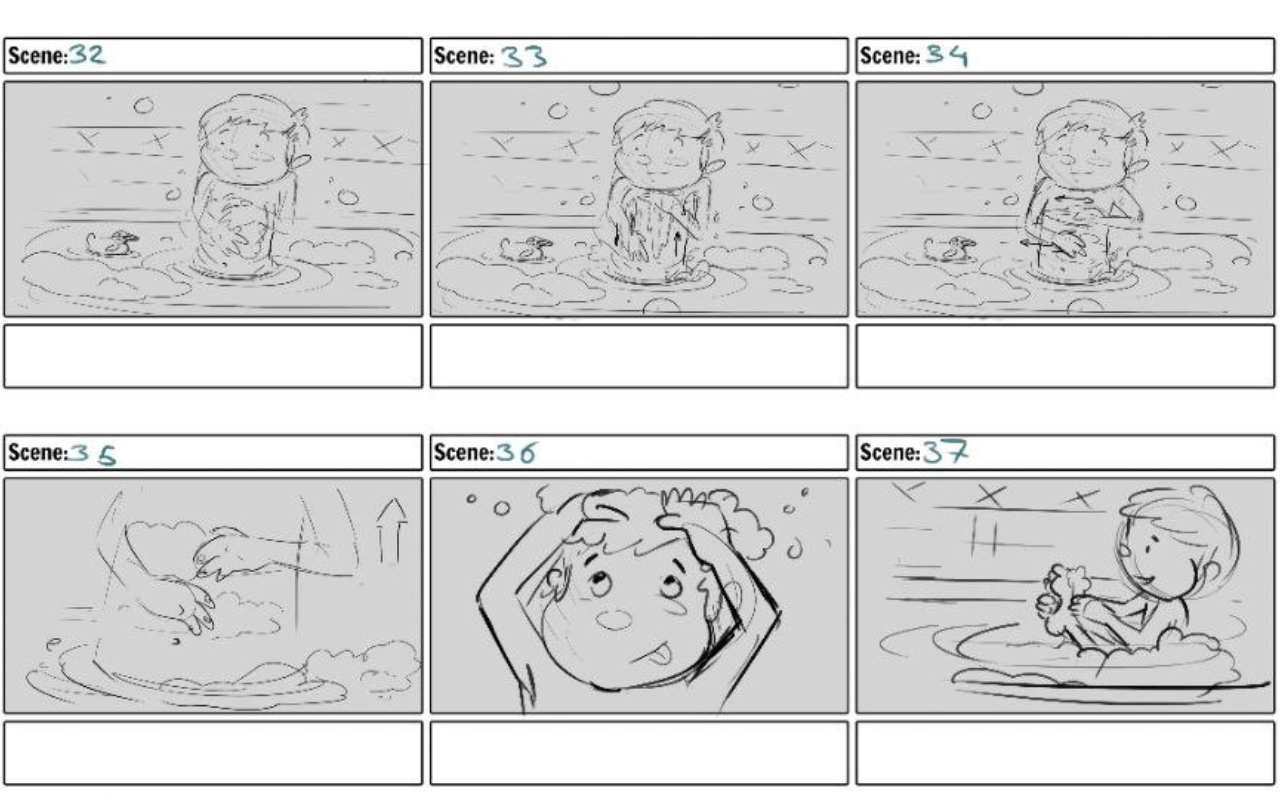
Animatic
In 2D animation, animatics represent a preliminary assembly of the film with basic motion and audio. They combine storyboards, rough animation, initial voice recordings, music, and sound effects into a moving story reel.
Though visuals are rough, animatics provide the first impression of the film’s rhythm and storytelling impact. This enables crucial iterations on the pace and staging before full animation. In essence, animatics bridge the gap between static storyboards and fully animated footage. They allow the 2D film to dynamically come to life before a finished shot is produced. Animatics transform plans on paper into an engaging rough cut.
Concept Art
Concept art is the key step in visually defining a 2D animation pipeline.
Character designers explore various sketches for the main characters before finalizing model sheets. These provide definitive references for proportions, expressions, and poses. Concept artists paint color keys and environments to establish the visual tone. Prop and vehicle designers add storytelling flourishes.
Finalized character model sheets provide definitive templates for proportions, turnarounds, facial expressions, and poses. Beyond characters, concept artists paint color keys, establishing lighting, ambiance, and architectural styles for settings. Prop designers sprinkle storytelling details into props and vehicles. The goal is to create a visually captivating world tailored to the story.
The styles, palettes, and design motifs form the DNA that unifies the visuals across shots and sequences. Every detail aims to complement the narrative’s tone and themes.
2D Animation Production Pipeline
Layout
Layout is a crucial early step in the animation production pipeline. Layout artists take the storyboard and design the scene compositions, camera angles, and character staging that will be used in the final animation.
In traditional 2D animation, layout artists draw the background environments, determine the camera movements, and block out the key character poses that will be required. This 2D layout provides a guide for the animators to follow as they create the final animated footage. The layout creates the overall look and continuity of the scenes before detailed animation begins.
Design
2D Character Design
Design artists conceptualize and draw the main characters, defining their visual appearance, personalities, and unique attributes. Once the core characters are designed, they are typically drawn from multiple angles to create model sheets used by the animators.
Environment Creation
Environment creation involves designing and painting the background settings the characters will inhabit. Background painters illustrate the locations, landscapes, and architecture in alignment with the story and scene requirements. Additional asset creation produces any props, vehicles, effects, or other elements needed.
Asset Creation
These assets help complete the mis-en-scène. All of these creation steps happen early in a 2D workflow, providing visual guides for the entire crew as animation begins. The characters, environments, and objects emerge from the concept art and design process with 2D drawings or paintings. This foundational art direction allows 2D animation and other types of animation to stay visually consistent as different animators work on shots with the same characters and worlds.
Rigging
Rigging is an important process in the 2D animation pipeline that prepares character assets for efficient animation. During rigging, the 2D character drawings are organized into layers and hierarchical parts that can be manipulated. For example, a character may have separate layers for the body, arms, legs, eyes, mouth, etc.
As part of the rigging pipeline, controls are then built into the rig to allow an animator to easily move these parts around without having to redraw everything. This includes things like rotation points, morphing abilities, and other controls to flex, pose, or transform the character.
Rigging in the 2D animation services helps bridge the gap between the initial character design and the ability to achieve fluid, dynamic animation.
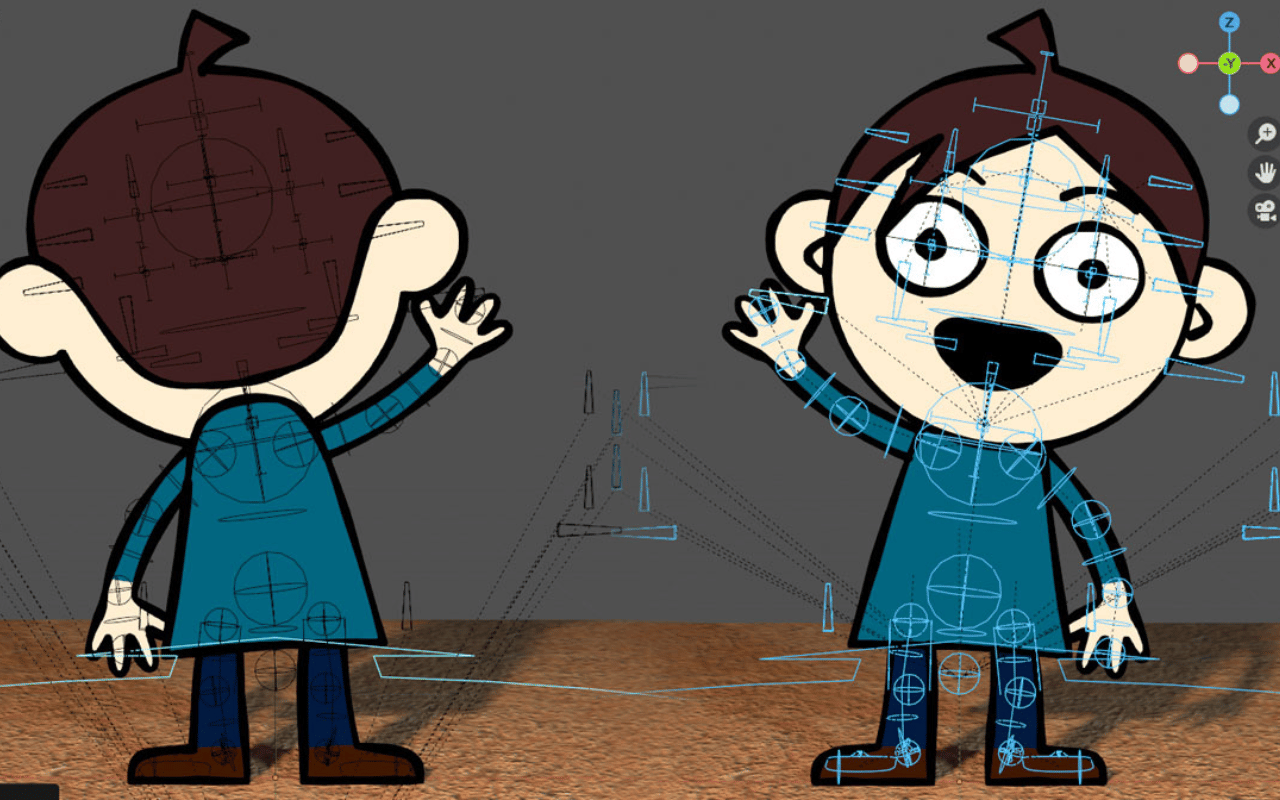
Key Animation
Keyframe animation is the core process in 2D animation, where the visual movement and sequences are created. After the layout and rigging stages, key animators bring the characters and scenes to life through sequential drawings and frames. Key animators draw the most important “key” poses that define the major positions and movements.
Key animators must understand timing, weight, arcs, and character appeal as they visually communicate the story through sequential drawings. Their work defines the acting, motion, and personality. Drawing directly on paper or using a graphics tablet, 2D key animators breathe life into characters by crafting engaging performances frame by frame through their animation skills.
Inbetweening
Inbetweening is an essential part of the traditional 2D animation production process. After the key animators create the important poses that define the animation, inbetweeners add the drawings that go in between these keyframes. Inbetweens help complete the illusion of smooth, seamless motion and gradual transitions. Without in-between frames, the animation would look choppy and disjointed. Inbetweeners are tasked with studying the key poses and interpolating the positions of the characters and elements in the intermediate frames.
Their drawings finely tune the movements, making them more realistic and natural. Inbetweens happen on twos (every other frame) or threes (every third frame). More in-betweens lead to smoother but more labor-intensive animation. Fewer in-betweens are more efficient yet can look more staggered.
Compositing
Compositing is the process of combining all of the separate animation elements together into final scenes and shots. During the 2D animation production process, background paintings, character drawings, effects, and other elements are produced by different artists and departments. Compositors take all of these disparate pieces and assemble them into seamless wholes.
Using specialized animation software, they layer the components together while matching colors, lighting, camera angles, and grain. Compositors also do paint touch-ups by digitally painting over mistakes or gaps in the frame-by-frame artwork. Proper compositing unifies everything together for a consistent look according to the intended cinematography and visual style.
2D Animation Post-Production Pipeline
Editing
Editing is the process of reviewing all the compiled animation and arranging it into the final order and pacing. In 2D animation, an editor reviews the story reels and animated footage that have been produced frame by frame. They assess the timing, ordering, transitions, and flow to create the best narrative cut. The editor collaborates with the director to achieve the right comedic or dramatic beats and emotional arcs.
Visual Effects
2D VFX adds enhanced layers of imagery and spectacle to 2D animated films. While effects were traditionally more limited in 2D animation, the integration of CGI and digital compositing has expanded the possibilities. From subtle enhancements to major set pieces, visual effects introduce eye-catching elements that would be difficult or impossible to achieve otherwise
Some common 2D animation effects are smoke, weather like rain or snow, magic spells and blasts, artificially generated crowds of people or creatures, and dynamic simulated environments like water or fire. Particle effects, matte paintings, and color corrections are also used to boost ambiance and excitement.
Sound Design
Sound design is the crafting and selection of audio elements that enhance an animated film. It weaves together three key aspects – dialogue, sound effects, and music. Dialogue includes the vocal performance and recording of the animated characters. Sound effects surround the world with ambient noise and punctuate the action with impacts, movement, and other auditory cues.
Final Output
The final output stage comes after all animation production and post-production are complete. This involves exporting the finished animation in its final delivery format and quality. The animation project is exported at the required specification whether it be for broadcast, streaming platforms, Blu-ray/DVD, or digital formats.
Tips for Creating a Fascinating 2D Animation
2D animation is an essential part of the creation process, and there are 5 key points to keep in mind when creating your own 2D animations.
1. Start with a strong story: A good story is the foundation of any successful animation, so take the time to develop a compelling plot and interesting characters.
2. Keep it simple: When it comes to 2D animation, less is often more. Focus on creating clear, concise visuals that tell your story effectively.
3. Pay attention to detail: The small details can make a big difference in your animation, so be sure to pay close attention to every aspect of your work.
4. Be patient: Creating a successful 2D animation takes time and patience, so don’t expect to finish your project overnight. Have enough information about how long does 2D animation take and allow yourself ample time to complete your project and make revisions as needed.
5. Have fun: Remember that animation is meant to be enjoyed, so have fun with it! Let your creativity shine through, and enjoy the process of bringing your vision to life.
Read More: 12 Most Exciting 2D Animation Trends of 2025
Conclusion
The 2D animation pipeline is lengthy, spanning everything from early conceptualization to final delivery. While requiring tremendous coordination, its structured workflow enables 2D projects to efficiently move through the phases of pre-production, production, and post-production. Planning, creating assets, animating, compositing, editing, sound design, and output all rely on each other in the pipeline.
When executed smoothly, this workflow allows dedicated artists and specialists to translate ideas into animated reality through sequential drawings imbued with life. The 2D animation pipeline requires immense creativity guided by technical rigor. At its best, this production cycle comes together harmoniously to breathe vibrant visual storytelling into hand-crafted 2D worlds.
FAQs
Can procedural tools speed up animation timing?
Yes. Tools like spline interpolation, Bézier curves, or noise in node-based systems help automate motion or effects.
When is in-between interpolation handled manually or via tools?
Manual in-betweening is still vital, but AI tools (like sketch-aware interpolation) are emerging to ease the workload.
Why do some animators resist 3D-for-2D visual workflows?
Using 3D to mimic 2D may save time but can dilute stylistic integrity and storytelling nuance.
How do studios collaborate efficiently with large animation files?
Teams use real-time cloud tools like LucidLink to sync large files and keep workflows smooth.
What common mistakes slow down 2D animation production?
Skipping planning/storyboarding, poor asset organization, bad timing, and ignoring animation principles.









